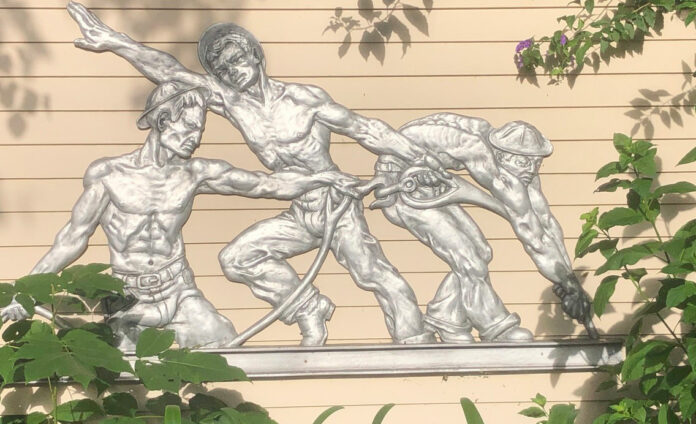
A bas-relief sculpture in Healdsburg along University Avenue harkens back to the days of manual labor when steel and iron workers built skyscrapers that changed America’s city skylines.
The subject matter and style reflects Depression Era art coming from the Federal Emergency Relief Act, which spawned work programs to alleviate 25% unemployment.
From the Relief Act came the Public Works Art Project, a five-month project in which artists were hired as workers. This was a novel concept. The only guidance the government gave was that the subject matter should reflect the “American scene.”
In 1933, 3,500 need-qualified artists signed up and began making public art. They produced over 15,000 murals, paintings and sculptures. The government paid out $1.1 million, about $75 for each piece of art, which is approximately $1,750 each in today’s dollars. Art from this short project decorates schools, city halls, libraries and other non-federal buildings.
Later, the WPA (Works Progress Administration) employed artists based on the success of the Public Works Art Project. About 5,000 artists produced over 450,000 cataloged pieces of art, plus uncounted posters and craft projects for the WPA. With artists paid less than $25 per week, the government spent $35 million, or $77 for each piece of art.
Fun facts: WPA artists who later became famous include: Mark Rothko, Jackson Pollock, Dorothea Lange and Walker Evans. Rothko’s Orange, Red, Yellow three-tone painting sold for $86 million in 2012. Pollock’s Number 5, 1948 drip, splatter, splash painting sold for $140 million in 2006.
A funny movie about a person living in a trailer finding a Pollock painting is Who the #$&% Is Jackson Pollock? released in 2006.







